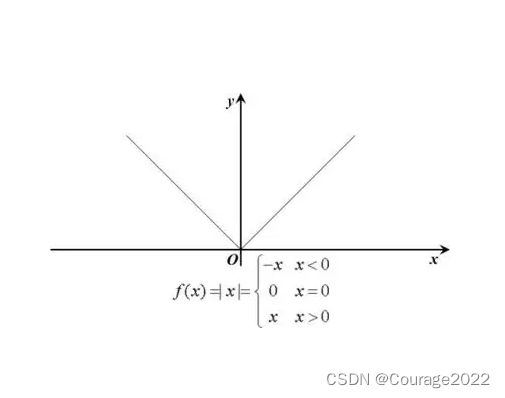Chapter2 机器学习回顾与Pytorch的基本操作
目录
2.1 机器学习的本质是分类与回归
2.1.1 分类问题
2.1.2 回归问题
2.1.3 构成机器学习的元素
2.2 Pytorch的基本概念
2.2.1 张量、变量与nn.module
2.2.2 张量与机器学习的关系
2.3 tensor编程基础
2.3.1 正常定义的tensor(ones、eye、zeros)
2.3.2 特殊定义的tensor (zeros_like、ones_like)
2.3.3 特殊定义的tensor (rand(随机)、normal(正态分布)、uniform(均匀分布)、arange(序列)、linspace(等间隔))
2.3.4 tensor的属性
2.3.5 tensor的算术无运算编程(一)
2.3.6 Pytorch中的inplace操作与广播机制
2.3.7 Tensor的取整、取余操作
2.3.8 Tensor的比较运算
2.3.9 Tensor的三角函数
2.3.10 Tensor中其他的数学函数
2.1 机器学习的本质是分类与回归
2.1.1 分类问题
分类问题:
如上图所示是一个分类问题,即给你一张图片让你输出它的类别,对于类别的值我们采用离散的值来描述,我们最终输出的是一个十维的概率分布,概率值指向最大的维度就是我们最终的分类结果。
2.1.2 回归问题
回归问题:
如上图是一个股票价格波动的一个曲线,回归值解决的就是连续值的预测,如果我们机器学习最终的预测模型是一个连续模型,我们将它定义为回归问题。如股票价格的预测、身高的预测、房价的预测等等。
2.1.3 构成机器学习的元素
样本、模型、训练、测试、推理。
拿房价预测做举例:
样本:样本由属性与标签构成,可以理解为函数形式
,
对应属性,
对应标签。在上图房价预测这个问题中,属性指年份、标签指房价指数。
模型:为了拟合这个属性相对于标签的函数,我们假定拟合模型为
。当然这可能不是最好的,只是一个假定而已。
训练:在我们本科阶段,解方程是几个未知数对应几元方程,但在机器学习中不同,我们拿(属性,标签)的海量数据对模型参数
进行训练,也就是说(参数数量远小于样本量),最终我们通过本专栏内容训练出了模型参数。(深度学习的模型参数数量远大于样本量)
测试:我们拿代价函数评判这个函数的好坏。
推理:对于一个新的没有标签的属性数据,我们要推理它的属性。比如我们通过所给模型来预测2090年的房价指数。
2.2 Pytorch的基本概念
2.2.1 张量、变量与nn.module
Tensor:张量
我们之前描述物体所用的形式:标量、向量、矩阵只能描述1维、n维、
维的事物,而用这些描述形式最多可以描述
维的事物无法描述高维,而我们用张量可以描述任意维度的事物。可以理解向量是1维张量、矩阵是2维张量。拿房价预测来讲,房价可能受地域、面积、海拔等不同因素影响,用低维张量难以表示。
Variable:变量
机器学习人物中用变量表达参数。
nn.module:解决计算机视觉问题所用的网络结构
2.2.2 张量与机器学习的关系
机器学习就是用tensor表达样本,一条语音数据用一个向量进行描述(采样后的波形)、图像灰度图用二阶张量来描述(0-256 h*w矩阵)。
2.3 tensor编程基础
2.3.1 正常定义的tensor(ones、eye、zeros)
import torch a = torch.Tensor([[1,2],[3,4]]) print(a) print(a.type()) b = torch.Tensor(2,3) print(b) print(b.type()) c = torch.ones(2,2) print(c) print(c.type()) d = torch.eye(2,2) print(d) print(d.type()) e = torch.zeros(2,2) print(e) print(e.type())可以看出不加声明的话tensor中的元素都是float类型的,如果仅仅对tensor进行声明输出的是内存数据。eye对应单位矩阵,zeros对应零矩阵。
2.3.2 特殊定义的tensor (zeros_like、ones_like)
import torch a = torch.Tensor([[1,2],[3,4]]) print(a) print(a.type()) b = torch.Tensor(2,3) print(b) print(b.type()) c = torch.ones(2,2) print(c) print(c.type()) d = torch.eye(2,2) print(d) print(d.type()) e = torch.zeros(2,2) print(e) print(e.type()) f = torch.zeros_like(b) g = torch.ones_like(b) print(f) print(g)可以看出,用此种方法定义出的tensor保留了原来的格式并赋予了新的赋值方法。
2.3.3 特殊定义的tensor (rand(随机)、normal(正态分布)、uniform(均匀分布)、arange(序列)、linspace(等间隔))
import torch a = torch.rand(2,2) print(a) a = torch.normal(mean = 0.0,std = torch.rand(5)) print(a) a = torch.normal(mean = torch.rand(5),std = torch.rand(5)) print(a)生成随机值与生成正态分布值。
生成正态分布值解释:我们初始化均值mean、方差std为五组不同的数据,即五组不同的正态分布,我们再从这五组不同的正态分布随机生成满足正态分布的五个值。
import torch a = torch.Tensor(2,2).uniform_(-1,1) print(a) a = torch.arange(0,10,2) print(a) a = torch.linspace(1,100,3) print(a)都很好理解,不加解释。
2.3.4 tensor的属性
每一个tensor有torch.dtype、torch.device、torch.layout三种属性
torch.dtype标识了数据类型。
torch.device标识了tensor.Tensor对象在创建之后所存储在的设备名称(CPU、GPU)。
torch.layout表示tensor.Tensor内存布局的对象(稠密,稀疏)。
定义稠密张量无须多言是一种缺创建省的方式:
torch.tensor([1,2,3],dtype=torch.float32,device=torch.device('cpu'))定义稀疏张量:torch.sparse_coo_tensor,coo类型表示了非零元素的坐标形式:
类似于数据结构的稀疏矩阵可以大量节省内存,如下代码的含义是三组坐标的值非零
,值为
,类型为float32,是一个
的tensor。
import torch i = torch.tensor([[0,1,2],[2,0,2]]) v = torch.tensor([3,4,5]) a = torch.sparse_coo_tensor(i,v,(3,4)) print(a)稀疏张量转换成稠密张量:
a = torch.sparse_coo_tensor(i,v,(3,4)).to_dense()
2.3.5 tensor的算术无运算编程(一)
无liuhongwei@liuhongwei-Lenovo-Legion-R9000P2021H:~/桌面/pytorch_code/03$ python3 demo_op.py tensor([[0.5891, 0.1490, 0.2156], [0.1762, 0.3079, 0.0788]]) tensor([[0.3559, 0.5683, 0.2320], [0.1876, 0.4727, 0.2266]]) tensor([[0.9451, 0.7173, 0.4475], [0.3638, 0.7806, 0.3054]]) tensor([[0.9451, 0.7173, 0.4475], [0.3638, 0.7806, 0.3054]]) tensor([[0.9451, 0.7173, 0.4475], [0.3638, 0.7806, 0.3054]]) tensor([[0.5891, 0.1490, 0.2156], [0.1762, 0.3079, 0.0788]]) tensor([[0.9451, 0.7173, 0.4475], [0.3638, 0.7806, 0.3054]]) tensor([[0.9451, 0.7173, 0.4475], [0.3638, 0.7806, 0.3054]]) ==== sub res ==== tensor([[0.5891, 0.1490, 0.2156], [0.1762, 0.3079, 0.0788]]) tensor([[0.5891, 0.1490, 0.2156], [0.1762, 0.3079, 0.0788]]) tensor([[0.5891, 0.1490, 0.2156], [0.1762, 0.3079, 0.0788]]) tensor([[0.5891, 0.1490, 0.2156], [0.1762, 0.3079, 0.0788]]) tensor([[0.5891, 0.1490, 0.2156], [0.1762, 0.3079, 0.0788]]) ===== mul ==== tensor([[0.2097, 0.0847, 0.0500], [0.0331, 0.1455, 0.0179]]) tensor([[0.2097, 0.0847, 0.0500], [0.0331, 0.1455, 0.0179]]) tensor([[0.2097, 0.0847, 0.0500], [0.0331, 0.1455, 0.0179]]) tensor([[0.5891, 0.1490, 0.2156], [0.1762, 0.3079, 0.0788]]) tensor([[0.2097, 0.0847, 0.0500], [0.0331, 0.1455, 0.0179]]) tensor([[0.2097, 0.0847, 0.0500], [0.0331, 0.1455, 0.0179]]) === div === tensor([[0.5891, 0.1490, 0.2156], [0.1762, 0.3079, 0.0788]]) tensor([[0.5891, 0.1490, 0.2156], [0.1762, 0.3079, 0.0788]]) tensor([[0.5891, 0.1490, 0.2156], [0.1762, 0.3079, 0.0788]]) tensor([[0.5891, 0.1490, 0.2156], [0.1762, 0.3079, 0.0788]]) tensor([[0.5891, 0.1490, 0.2156], [0.1762, 0.3079, 0.0788]]) tensor([[1., 1.], [1., 1.]]) tensor([[1., 1.], [1., 1.]]) tensor([[1., 1.], [1., 1.]]) tensor([[1., 1.], [1., 1.]]) tensor([[1., 1.], [1., 1.]]) torch.Size([1, 2, 3, 3]) tensor([1, 8]) tensor([1, 8]) tensor([1, 8]) tensor([1, 8]) tensor([1, 8]) torch.FloatTensor tensor([2.7183, 7.3891]) tensor([2.7183, 7.3891]) tensor([ 15.1543, 1618.1781]) tensor([ 15.1543, 1618.1781]) tensor([2.3026, 0.6931]) tensor([2.3026, 0.6931]) tensor([ 0.8340, -0.3665]) tensor([ 0.8340, -0.3665]) tensor([3.1623, 1.4142]) tensor([3.1623, 1.4142]) tensor([1.7783, 1.1892]) tensor([1.7783, 1.1892])
2.3.6 Pytorch中的inplace操作与广播机制
inplace操作即不允许使用临时变量。也称为原地操作。x = x+y。比如add_、sub_、mul_
广播机制即张量参数可以自动扩展为相同大小,广播机制要满足两个条件:
1.每个张量至少有一个维度 2.满足右对齐
torch.rand(2,1,1)+torch.rand(3)所谓右对齐,以这两个张量以右边进行对齐。也即"3与1进行对齐",3前面没有维度我们进行补1,也即
这个维度,我们从右向左看,满足两个条件(要么相等,要么一个为1)我们认为是右对齐的。(实例中有个1我们认为满足右对齐)
import torch a = torch.rand(2, 2) b = torch.rand(1, 2) # a, 2*1 # b, 1*2 # c, 2*2 # 2*4*2*3 c = a + b print(a) print(b) print(c) print(c.shape)我们看到,将第一行进行相加,再把第一行拷贝到第二行进行相加得到结果。
我们来看一个复杂的例子:
import torch a = torch.rand(2,1,1,3) b = torch.rand(4,2,3) c = a + b print(a) print(b) print(c) print(c.shape)我们可以预测到我们输出的向量维为
,我们看看结果。
liuhongwei@liuhongwei-Lenovo-Legion-R9000P2021H:~/桌面/pytorch_code/03$ python3 demo_broadcast.py tensor([[[[0.3442, 0.7778, 0.3574]]], [[[0.0979, 0.8217, 0.0140]]]]) tensor([[[0.4133, 0.1959, 0.4576], [0.4061, 0.8951, 0.3582]], [[0.7706, 0.4344, 0.5427], [0.5669, 0.4276, 0.7704]], [[0.6270, 0.5850, 0.8272], [0.7869, 0.1770, 0.5247]], [[0.3716, 0.6591, 0.5735], [0.9159, 0.4745, 0.2106]]]) tensor([[[[0.7575, 0.9737, 0.8149], [0.7503, 1.6729, 0.7155]], [[1.1148, 1.2122, 0.9000], [0.9111, 1.2054, 1.1277]], [[0.9712, 1.3629, 1.1846], [1.1311, 0.9549, 0.8820]], [[0.7158, 1.4370, 0.9309], [1.2601, 1.2524, 0.5680]]], [[[0.5112, 1.0176, 0.4716], [0.5040, 1.7168, 0.3722]], [[0.8685, 1.2561, 0.5567], [0.6648, 1.2494, 0.7844]], [[0.7249, 1.4068, 0.8412], [0.8848, 0.9988, 0.5387]], [[0.4695, 1.4809, 0.5875], [1.0138, 1.2963, 0.2246]]]]) torch.Size([2, 4, 2, 3])
2.3.7 Tensor的取整、取余操作
我们具体看看代码操作:
import torch a = torch.rand(2, 2) a = a * 10 print(a) print(torch.floor(a)) print(torch.ceil(a)) print(torch.round(a)) print(torch.trunc(a)) print(torch.frac(a)) print(a % 2) b = torch.tensor([[2, 3], [4, 5]], dtype=torch.float) print(torch.fmod(a, b)) print(torch.remainder(a, b))
2.3.8 Tensor的比较运算
import torch a = torch.rand(2, 3) b = torch.rand(2, 3) print(a) print(b) print(torch.eq(a, b)) #判断每一个元素是否相等 返回一个2*3张量 元素为true、false print(torch.equal(a, b)) #如果全相等(shape和元素值)返回true print(torch.ge(a, b)) print(torch.gt(a, b)) print(torch.le(a, b)) print(torch.lt(a, b)) print(torch.ne(a, b)) #### a = torch.tensor([[1, 4, 4, 3, 5], [2, 3, 1, 3, 5]]) print(a.shape) #2*5 print(torch.sort(a, dim=1, descending=False)) #输出如下: #torch.Size([2, 5]) #values=tensor([[1, 3, 4, 4, 5], # [1, 2, 3, 3, 5]]), #indices=tensor([[0, 3, 1, 2, 4], # [2, 0, 1, 3, 4]])) 在原来的tensor中的索引值 #dim是指定轴的意思:如果dim=0则会对1,2 4,3 4,1 3,3 5,5排序 dim=1会对两个序列进行排序 ##topk a = torch.tensor([[2, 4, 3, 1, 5], [2, 3, 5, 1, 4]]) print(a.shape) #2*5 print(torch.topk(a, k=2, dim=1, largest=False)) #dim=0 指向2的维度 dim=1 指向5的维度 print(torch.kthvalue(a, k=2, dim=0)) #第0维(2)第二小的数 #values=tensor([2, 4, 5, 1, 5]), #indices=tensor([1, 0, 1, 1, 0])) print(torch.kthvalue(a, k=2, dim=1)) #第1维(5)第二个最小值 #values=tensor([2, 2]), #indices=tensor([0, 0])) a = torch.rand(2, 3) print(a) print(a/0) print(torch.isfinite(a)) ##有界 print(torch.isfinite(a/0)) ##有界 print(torch.isinf(a/0)) ##无界 print(torch.isnan(a)) ##nan import numpy as np a = torch.tensor([1, 2, np.nan]) print(torch.isnan(a)) a = torch.rand(2, 3) print(a) print(torch.topk(a, k=2, dim=1, largest=False)) print(torch.topk(a, k=2, dim=1, largest=True))liuhongwei@liuhongwei-Lenovo-Legion-R9000P2021H:~/桌面/pytorch_code/03$ python3 demo_compare.py tensor([[0.0923, 0.9738, 0.9263], [0.8390, 0.9426, 0.7391]]) tensor([[0.1983, 0.1863, 0.0867], [0.7300, 0.9369, 0.6763]]) tensor([[False, False, False], [False, False, False]]) False tensor([[False, True, True], [ True, True, True]]) tensor([[False, True, True], [ True, True, True]]) tensor([[ True, False, False], [False, False, False]]) tensor([[ True, False, False], [False, False, False]]) tensor([[True, True, True], [True, True, True]]) torch.Size([2, 5]) torch.return_types.sort( values=tensor([[1, 3, 4, 4, 5], [1, 2, 3, 3, 5]]), indices=tensor([[0, 3, 1, 2, 4], [2, 0, 1, 3, 4]])) torch.Size([2, 5]) torch.return_types.topk( values=tensor([[1, 2], [1, 2]]), indices=tensor([[3, 0], [3, 0]])) torch.return_types.kthvalue( values=tensor([2, 4, 5, 1, 5]), indices=tensor([1, 0, 1, 1, 0])) torch.return_types.kthvalue( values=tensor([2, 2]), indices=tensor([0, 0])) tensor([[0.4250, 0.6952, 0.5542], [0.5016, 0.5173, 0.9565]]) tensor([[inf, inf, inf], [inf, inf, inf]]) tensor([[True, True, True], [True, True, True]]) tensor([[False, False, False], [False, False, False]]) tensor([[True, True, True], [True, True, True]]) tensor([[False, False, False], [False, False, False]]) tensor([False, False, True]) tensor([[0.7347, 0.2777, 0.1669], [0.7062, 0.7895, 0.7085]]) torch.return_types.topk( values=tensor([[0.1669, 0.2777], [0.7062, 0.7085]]), indices=tensor([[2, 1], [0, 2]])) torch.return_types.topk( values=tensor([[0.7347, 0.2777], [0.7895, 0.7085]]), indices=tensor([[0, 1], [1, 2]]))讲解在源码已标识注释。
2.3.9 Tensor的三角函数
import torch a = torch.zeros(2, 3) b = torch.cos(a) print(a) print(b)cos0=1。
2.3.10 Tensor中其他的数学函数
最重要的就是绝对值函数、符号函数、sigmoid函数(激活函数)!






















